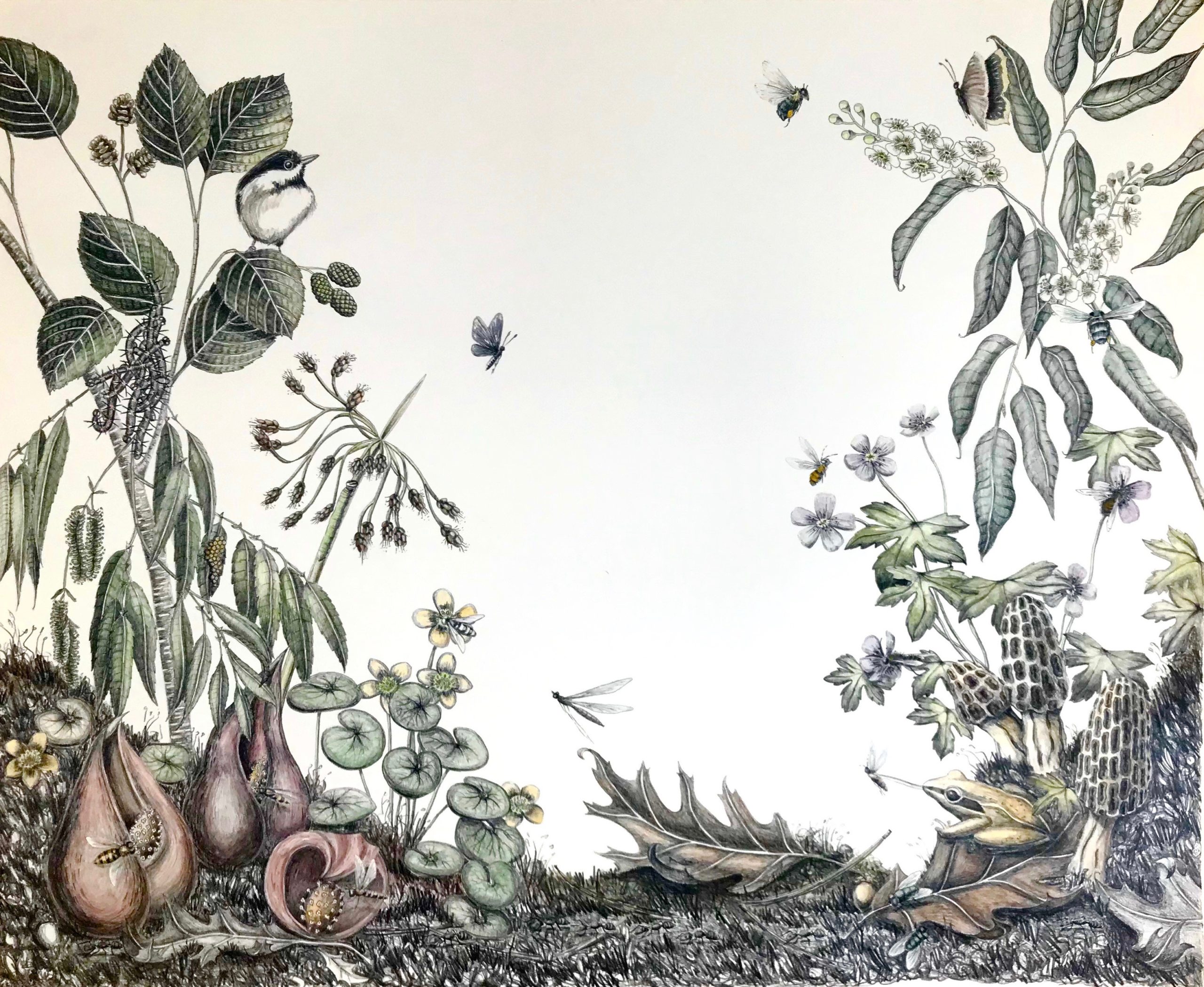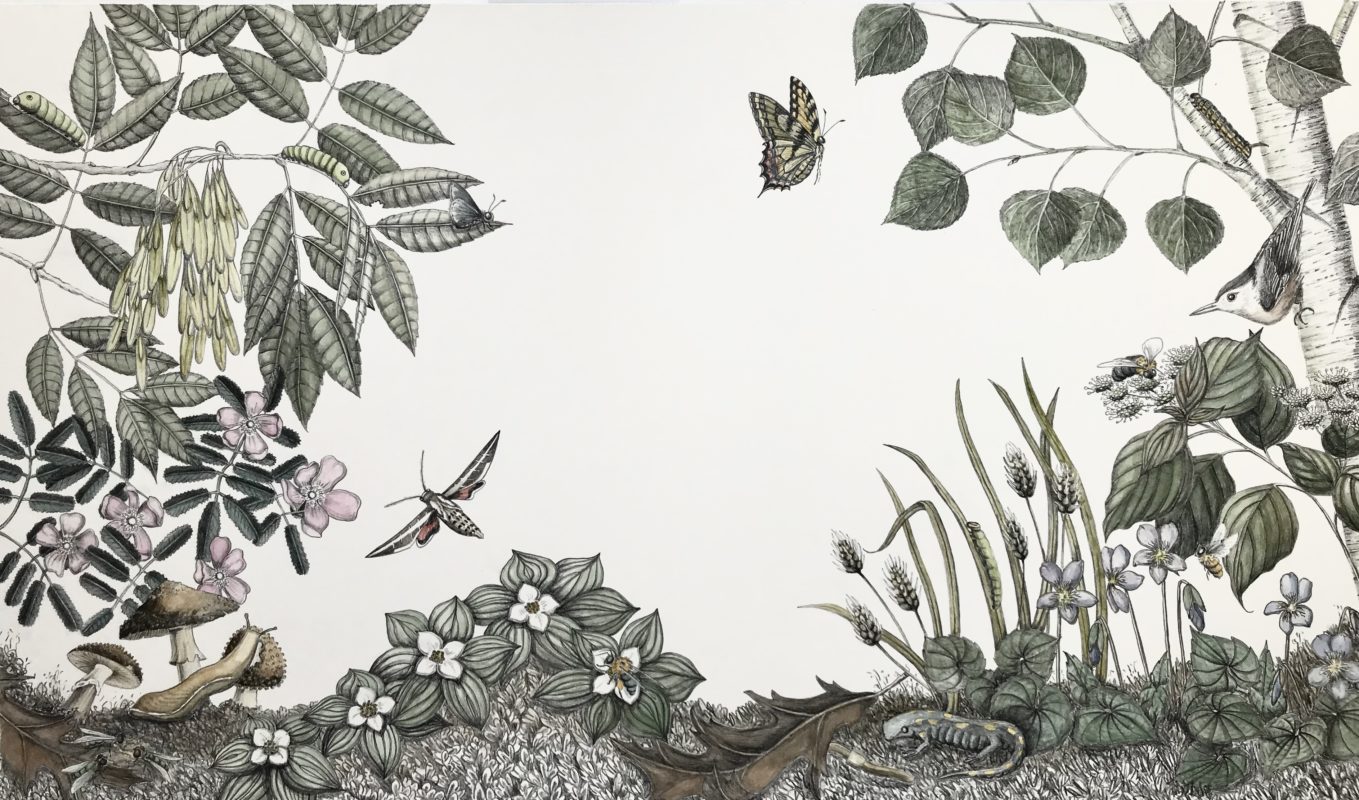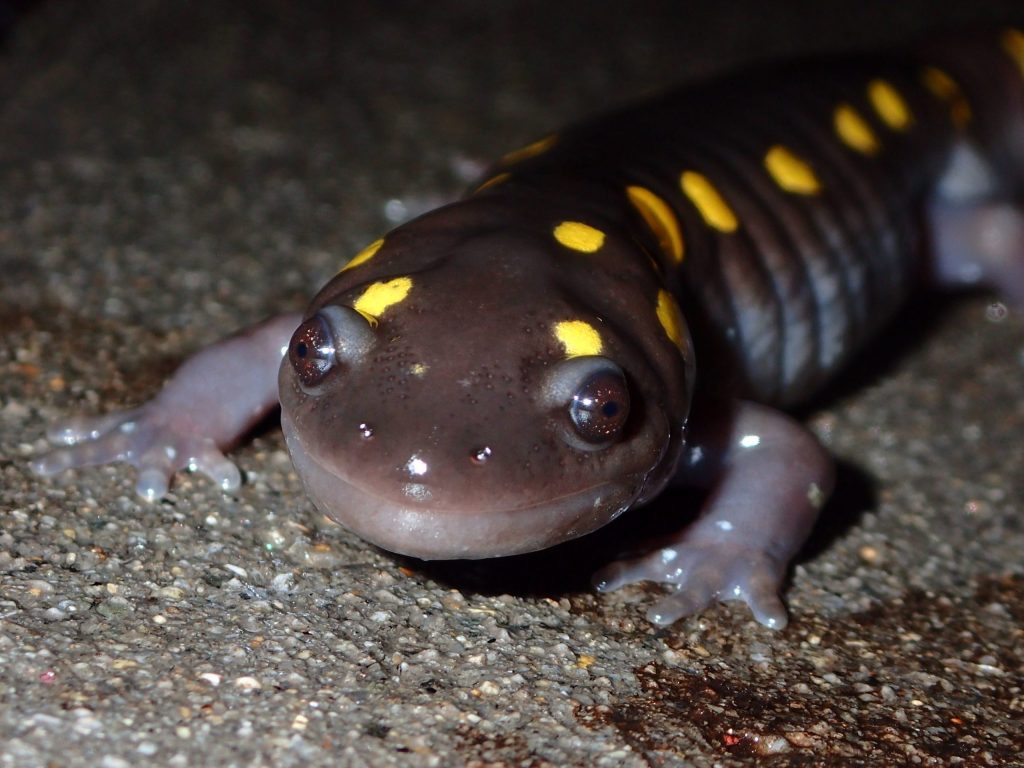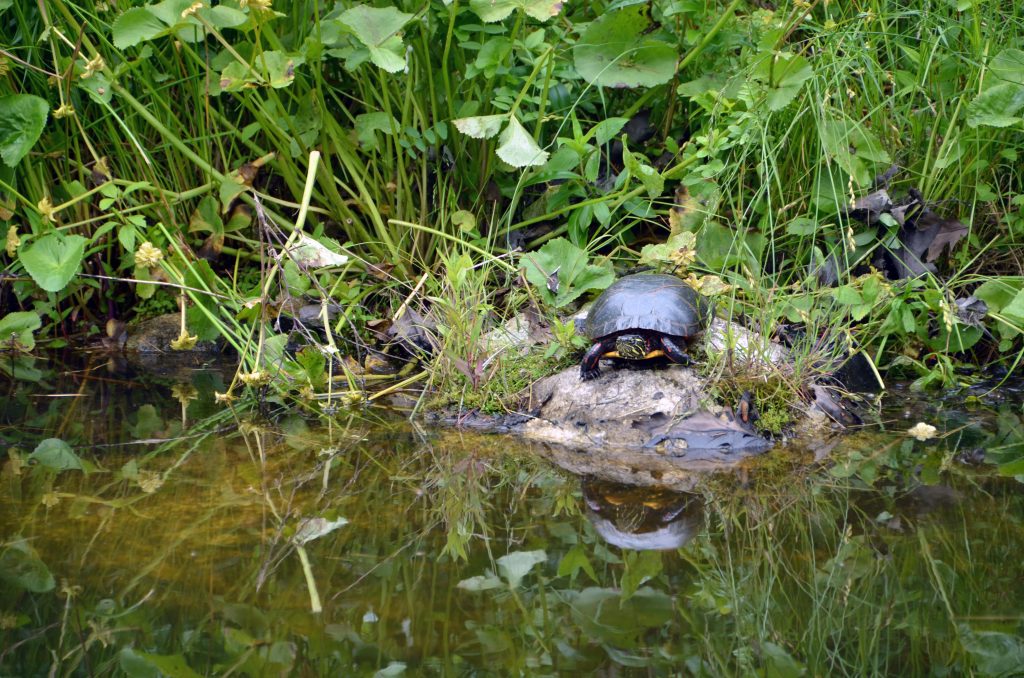There are so many reasons I love my job as Interpretation and Exhibits Coordinator at the Gardens. For one, I get to learn about nature and then communicate that knowledge to volunteers and staff so they, in turn, can pass it along to our visitors. Each year, I focus on creating educational opportunities around our annual theme, adding new signs at spots of interest in the Gardens, developing our Discovery Carts, and brainstorming new tours. All of this research about the natural world informs not only my work, but also what I do when I am not at the Gardens.
At home, I am usually gardening or painting. As an artist, my art is directly linked to what I learn at the Gardens. Recently, I have completed two works that are part of a new series, Restoring the Wild, about native plants and the ecosystems they engender. After working in our butterfly house these past three years, I know that native insects need native plants. I also know that we need native insects—the foundational support for our whole ecosystem. In this time of steep insect decline, it’s important to realize that native insects have co-evolved with the plants around them—many can only eat a specific plant or family of plants, which is why growing a wide array of local species is so important.

Restoring the Wild: Portland, by Vanessa Nesvig
Restoring the Wild: Portland depicts species of native plants and the insects and animals they support. This piece, for instance, shows black cherry, speckled alder, black willow, and red oak, which are native to Portland, and support over 500 species of butterflies and moths. These trees and shrubs also provide much-needed spring nectar and pollen to native mason, sweat, and bumblebees. Hoverflies, blowflies, and crane flies also need early nectar from plants like skunk cabbage, marsh marigolds, and spotted geraniums. These insects and others, such as the mourning cloak caterpillars, then become food for the chickadee chicks who will need 9,000 insects to make it to adulthood. All of these species depend on each other to exist, including the ants, larvae, and fungi who break everything down after life is over, providing the nutrients that plants need. Then it all begins again.

Restoring the Wild II, by Vanessa Nesvig
Restoring the Wild II shows green ash, shining rose, bunchberry, violets, lurid sedge, alternate leaf dogwoods, and quaking aspen, all of which support the eastern tiger swallowtail, skipper, white-lined sphinx moth, bumblebee, and mason bee, who, in turn, support the white-breasted nuthatch. Blowflies and worms will break down what’s left so that spotted salamanders and larger animals can make use of this complex web of nutrients. Restoration like this can and must start here in our own backyards and communities.
My work can be seen on the cover and inside pages of the April 2020 issue of The Wild Seed Project magazine. The full series will be on view in 2021 at Maine Audubon at Gilsland Farm and at Coastal Maine Botanical Gardens. See vanessanesvig.com for more information.
— Vanessa Nesvig, Interpretation and Exhibits Coordinator

